444. The crossing over at Drus was 41
right ascension days after Rigel (*78), i.e. 11 + 80 +
78 + 41 = 210 days after the solstice and 6 + 210 = 216 days after
Ca3-21:
|
JAN 31 |
FEBR 1 (32 = 73 - 41) |
2 |
3 |
4 (115 - 80) |
 |
 |
 |
 |
 |
|
Ca3-21 (→ March 21 →
Gregorian equinox) |
Ca3-22 (73) |
Ca3-23 |
Ca3-24 |
Ca3-25 (→ March 25→ Julian
equinox) |
|
tagata tuu
rima ki ruga |
te maitaki |
te henua |
Rei hata
ia |
tagata
rogo |
|
Ruga.
Upper part,
higher part; when used as a
locative adverb, it is
preceded by a preposition:
i ruga, above, on;
ki ruga, upwards, mai
ruga, from above. When
used with a noun the same
preposition is repeated:
he-ea te vî'e Vakai, he-iri
ki ruga ki te Ahu ruga,
the woman Vakai went, she
climbed Ahu Runga. Ruga
nui, high, elevated,
lofty: kona ruga nui,
high place, elevated
position, high office;
mana'u ruga nui,
elevated thoughts. Vanaga.
High up; a ruga,
above; ki ruga, on,
above, upon; ma ruga,
above; o ruga, upper;
kahu o ruga, royal
(sail); ruga iho,
celestial. Hakaruga,
to accumulate, to draw up. P
Pau., Mgv.: ruga,
above. Mq.: úna,
úka, id. Ta.: nua,
nia, id. Churchill.
Hata.
1. Table,
bureau. P Pau.: afata,
a chest, box. Mgv.: avata,
a box, case, trunk, coffin.
Mq.: fata, hata,
a piece of wood with several
branches serving as a rack,
space, to ramify, to branch;
fataá, hataá,
stage, step, shelf. Ta.:
fata, scaffold, altar.
2. Hakahata, to
disjoint; hakahatahata,
to loosen, to stretch. P
Pau.: vata, an
interval, interstice. Mgv.:
kohata, the space
between two boards, to be
badly joined; akakohata,
to leave a space between two
bodies badly joined;
hakahata, to be large,
broad, wide, spacious, far
off. Mq.: hatahata,
fatafata, having
chinks, not tightly closed,
disjointed. Ta.: fatafata,
open. 3. Hatahata,
calm, loose, prolix, vast.
Mgv.: hatahara,
broad, wide, spacious, at
one's ease. Ta.: fatafata,
free from care. Mq.:
hatahata, empty, open.
4. Hatahata, tube,
pipe, funnel. Churchill.
Sa.: fata, a raised
house in which to store
yams, a shelf, a handbarrow,
a bier, a litter, an altar,
to carry on a litter;
fatāmanu,
a scaffold. To.:
fata,
a loft, a bier, a
handbarrow, to carry on a
bier; fataki,
a platform. Fu.:
fata,
a barrow, a loft;
fatataki,
two sticks or canes attached
to each other at each side
of a house post to serve as
a shelf. Niuē:
fata,
a cage, a handbarrow, a
shelf, a stage, (sometimes)
the upper story of a house.
Uvea: fata,
a barrow, a bier. Fotuna:
fata,
a stage. Ta.: fata,
an altar, a scaffold, a
piece of wood put up to hang
baskets of food on;
afata,
a chest, a box, a coop, a
raft, a scaffold. Pau.:
fata,
a heap; afata,
a box, a chest. Ma.:
whata,
a platform or raised
storehouse for food, an
altar, to elevate, to
support. Moriori:
whata,
a raft. Mq.: fata,
hata,
hataá,
shelves. Rapanui:
hata,
a table. Ha.: haka,
a ladder, an artificial
henroost; alahaka,
a ladder. Mg.: ata,
a shelf; atamoa,
a ladder; atarau,
an altar. Mgv.:
avata,
a coffer, a box. Vi.:
vata,
a loft, a shelf;
tāvata,
a bier. The Samoan
fata
is a pair of light timbers
pointed at the ends and tied
across the center posts of
the house, one in front, the
other behind the line of
posts; rolls of mats and
bales of sennit may be laid
across these timbers;
baskets or reserved victuals
may be hung on the ends. The
litter and the barrow are
two light poles with small
slats lashed across at
intervals. The Marquesan
fata
is a stout stem of a sapling
with the stumps of several
branches, a hat tree in
shape, though found among a
barehead folk. These
illustrations are sufficient
to show what is the common
element in all these
fata
identifications, light
cross-pieces spaced at
intervals. With this for a
primal signifaction it is
easy to see how a ladder, a
raft, a henroost, an altar
come under the same stem for
designation. Perhaps Samoan
fatafata
the breast obtains the name
by reason of the ribs; it
would be convincing were it
not that the plumpness of
most Samoans leaves the ribs
a matter of anatomical
inference. Churchill 2.
... Teke said to
Oti, 'Go and take the
hauhau tree, the paper
mulberry tree, rushes,
tavari plants, uku
koko grass, riku
ferns, ngaoho plants,
the toromiro tree,
hiki kioe plants (Cyperus
vegetus), the sandalwood
tree, harahara
plants, pua nakonako
plants, nehenehe
ferns, hua taru
grass, poporo plants,
bottle gourds (ipu ngutu),
kohe plants,
kavakava atua ferns,
fragrant tuere heu
grass, tureme grass (Diochelachne
sciurea), matie
grass, and the two kinds of
cockroaches makere
and hata.'
...
The division into quarters
of a 28-series can be
applied to the main phases
of the moon during the
visible period as was as to
a (reflex of the old world?)
sidereal month.
The separate subgroup
(29 makere - 30
hata) consists of the
names of two types of
cockroaches, but in related
eastern Polynesian languages
these names can also be
explained on a different
level. MAO. makere,
among others, 'to die', and
whata, among others,
'to be laid to rest on a
platform', deserve special
attention.
The theme hinted at
is one of death and burial.
In our scheme they occur at
just that time when the moon
'has died'! This lends
further support to the lunar
thesis.
Barthel 2.
 |
|
CLOSE TO THE FULL MOON: |
|
π4 Orionis (72.1), ο¹
Orionis (72.4), π5 Orionis
(72.8) |
π¹ Orionis (73.0), ο²
Orionis (73.4),
HASSALEH = ι Aurigae
(73.6), π6 Orionis (73.9) |
ALMAAZ (The Male Goat) = ε
Aurigae
(74.7),
HAEDUS I = ζ Aurigae
(74.8) |
HAEDUS II = η Aurigae
(75.9) |
5h (76.1)
ε Leporis (76.0),
CURSA = β Eridani
(76.4), λ Eridani (76.7) |
 |
|
CLOSE TO THE SUN: |
|
Dec 1
Ophiuchi (255.3),
GRAFIAS (Claws) =
ζ
Scorpii
(255.4) |
2 (336 = 4 * 84)
κ
Ophiuchi (256.2),
ζ
Arae (256.5),
ε
Arae (256.8),
CUJAM (Club) =
ε
Herculi
(256.9) |
3
no star listed (257) |
4
17h (258.7)
ARRAKIS = μ Draconis
(258.7) |
5
Mula-19 (The Root)
SABIK (The Preceding One) =
η Ophiuchi
(259.7), η Scorpii (259.9) |
|
kua tupu te rakau |
kua tupu - te
kihikihi |
te hau tea |
tagata - te rau
hei |
 |
 |
 |
 |
|
Ca4-1 (77) |
Ca4-2 |
Ca4-3 |
Ca4-4
(80) |
|
June 6 |
7 |
8 |
9 (160) |
|
... The month, which takes its name
from Juppiter the oak-god, begins on
June 10th and ends of July 7th.
Midway comes St. John's Day, June
24th, the day on which the oak-king
was sacrificially burned alive. The
Celtic year was divided into two
halves with the second half
beginning in July, apparently after
a seven-day wake, or funeral feast,
in the oak-king's honour ... |
|
FEBR 5 (36 = 77 - 41) |
RIGEL (Foot) |
7 |
EL-NATH (Butting One) |
|
... the Palenque scribes repeated
Creation again and described it as
'it was made visible, the image at
Lying-down-Sky, the
First-Three-Stone-Place'. Then we
learned that five hundred and
forty-two days later (1.9.2 in the
Maya system), Hun-Nal-Ye
'entered or became the sky' (och
ta chan). This 'entering' event
occurred on February 5, 3112 BC
... |
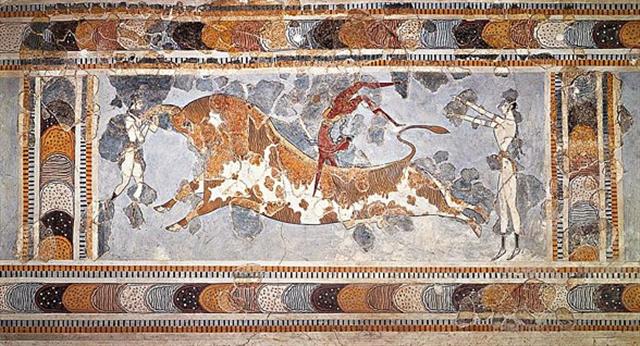 |
|
te maitaki |
te henua |
kua haga te mea ke |
manu puoko i tona ahi |
kua heu te huki |
|
Heu.
Offspring of parents from
two different tribes, person of
mixed descent, e.g. father Miru,
mother Tupahotu. Heuheu,
body hair (except genitals and
armpits). Vanaga. 1. Heheu;
ivi heheu, the cachalot, bone
needle; hakaheu, spade, to
shovel, to grub up, to scratch the
ground, to labor; rava hakaheu,
laborious, toilsome. 2. Hakaheu,
affair. Churchill. M. Heu, to
separate, to pull asunder; the eaves of
a house; heu, a single hair;
hau. to hew; heru, to comb;
huru, hair on the body; down;
feathers; maheu, scattered;
maheuheu, shrubs; mahuru,
scrub; heuea, to be separated.
Text Centre.
Nonoma ran, he quickly went to
Te Hikinga Heru (a ravine in the
side of the crater Rano Kau) and
looked around. There he saw the double
canoe way out near the (offshore)
islets, and the two (hulls of the canoe)
were lashed together. |
 |
 |
 |
 |
 |
|
Ca5-12 (6 + 112) |
Ca5-13 (472 / 4 = 118) |
Ca5-14 (78 + 41) |
Ca5-15 (120) |
Ca5-16 (11 * 11) |
|
CLOSE TO THE FULL MOON: |
|
July 16 (181 + 16)
AZMIDISKE = ξ Puppis
(117.4)
*76 = *117.4 - *41.4 |
17
φ Gemini (118.4)
*77 = *118.4 - *41.4 |
18
DRUS (Hard) = χ Carinae
(119.9) |
19 (200 = 79 + 121)
ω Cancri (120.2)
*79 = *120 - *41 |
20
8h (121.7)
χ Gemini (121.0),
NAOS = ζ Puppis
(121.3) |
|
... The Sothic cycle was based on what
is referred to in technical jargon as
'the periodic return of the heliacal
rising of Sirius', which is the first
appearance of this star after a seasonal
absence, rising at dawn just ahead of
the sun in the eastern portion of the
sky. In the case of Sirius the interval
between one such rising and the next
amounts to exactly 365.25 days -
a mathematically harmonious figure,
uncomplicated by further decimal points,
which is just twelve minutes longer than
the duration of the solar year
... |
|
MARCH 17 |
18 |
19 (78 = 199 - 121) |
20 |
21 (0h) |
|
... Ecclesiastically, the equinox is
reckoned to be on 21 March (even though
the equinox occurs, astronomically
speaking, on 20 March in most years)
... |
|
CLOSE TO THE SUN: |
|
Jan 16 (197 - 181)
ι Sagittarii (301.2),
TEREBELLUM = ω Sagittarii,
ξ Aquilae (301.3),
ALSHAIN (Falcon) = β Aquilae
(301.6), φ Aquilae (301.8)
*260 = *301 - *41 |
17
ε Pavonis, θ Sagittarii (302.3), γ
Sagittae (302.5), μ Pavonis (302.7 |
18
τ Aquilae (303.8) |
19
20h (304.4)
η Sagittae (304.2), δ Pavonis (304.4)
*263.0 = *304.4 - *41.4 |
20
SHANG WEI (Higher Guard) = κ Cephei
(305.2), θ Sagittae (305.4),
TSEEN FOO (Heavenly Raft) = θ Aquilae
(Ant.)
(305.6), ξ Capricorni (305.8)
*264.0 = *305.4 - *41.4 |
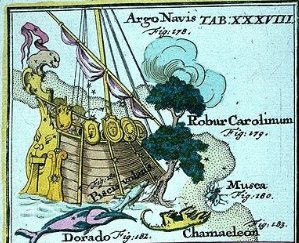
The Sun
was placed at the Stern → star as in
starboard for the right side of the
ship, the place for women. X was formed
by the timbers which had held the Sail (Ra)
in its proper place, yet the structure
of which the collision with the Oak had
broken to pieces. Drus → L. dūrus
= hard (as oak).
... The seventh tree is the oak, the
tree of Zeus, Juppiter, Hercules, The
Dagda (the chief of the elder Irish
gods), Thor, and all the other
Thundergods, Jehovah in so far as he was
'El', and Allah. The royalty of the
oak-tree needs no enlarging upon: most
people are familiar with the argument of
Sir James Frazer's Golden Bough, which
concerns the human sacrifice of the
oak-king of Nemi on Midsummer Day. The
fuel of the midsummer fires is always
oak, the fire of Vesta at Rome was fed
with oak, and the need-fire is always
kindled in an oak-log. When Gwion writes
in the Câd Goddeu, 'Stout Guardian of
the door, His name in every tongue', he
is saying that doors are customarily
made of oak as the strongest and
toughest wood and that 'Duir', the
Beth-Luis-Nion name for 'Oak', means
'door' in many European languages
including Old Goidelic dorus, Latin
foris, Greek thura, and German tür, all
derived from the Sanskrit Dwr, and that
Daleth, the Hebrew letter D, means
'Door' - the 'l' being originally an
'r'. Midsummer is the flowering season
of the oak, which is the tree of
endurance and triumph, and like the ash
is said to 'court the lightning flash'.
Its roots are believed to extend as deep
underground as its branches rise in the
air - Virgil mentions this - which makes
it emblematic of a god whose law runs
both in Heaven and in the Underworld ...
The month, which takes its name from
Juppiter the oak-god, begins on June
10th and ends of July 7th. Midway comes
St. John's Day, June 24th, the day on
which the oak-king was sacrificially
burned alive. The Celtic year was
divided into two halves with the second
half beginning in July, apparently after
a seven-day wake, or funeral feast, in
the oak-king's honour ...
... Robur Carolinum, Charles'
Oak, the Quercia of Italy and
the Karlseiche of Germany, was
formally published by Halley in 1679 in
commemoration of the Royal Oak of his
patron, Charles II, in which the king
had lain hidden for twenty-four hours
after his defeat by Cromwell in the
battle of Worcester, on the 3rd of
September 1651
...
Raa. Sun; day;
i te raá nei, today; raá îka,
good day for fishing. Vanaga. 1. Sun. 2.
Day. 3. Time. 4. Name of sub-tribe.
Fischer.
Te manu i te raá
= comet.
Barthel.
'... The substitution of the sun for the
sail, both of which are called ra
or raa in Polynesia, is a
remarkable feature in Easter Island art
... ' Heyerdahl 3.
1. The sun;
raa ea mai,
raa
puneki, sunrise;
raa tini,
raa toa,
noon. P Mgv., Ta.:
ra,
the sun. Mq.:
a,
id. 2. Day, date;
a raa
nei a, to-day, now;
raa i
mua, day before. P Mgv., Ta.:
ra,
a day. Mq.:
a, id. Churchill.
'... The chief thus makes his appearance
at Lakeba from the sea, as a
stranger to the land. Disembarking at
the capital village of Tubou, he
is led first to the chiefly house (vale
levu) and next day to the central
ceremonial ground (raaraa) of the
island ...' (Islands of History)
Ta.: toraaraa,
to raise up. Churchill 2.
LA, s.
Haw., sun, light, day. N. Zeal., ra,
sun, day. Marqu., a, id. Sam.,
la, id. Deriv.: Haw., lae, be
light, clear, shining; lai,
shining as the surface of the sea, calm,
still; laelae and lailai,
intens. Sam., lelei, something
very good; lala, to shine;
lalangi, to broil. Fiji., rai,
to see, appear; rai-rai, a seer,
a prophet. Teor., la, sun. Aru
Islands, lara, id.; rarie,
bright, shining. Amblaw., laei,
sun, day. Irish, la, lae,
day. Laghmani (Cabul), la'e, day.
Sanskr., laj, lanj, to
appear, shine; râj, to shine.
Ved., to govern; s. a king. If,
as Benfey intimates, the Sanskrit verb
bhrâj, to shine, to beam, is
'probably abhi-râj', an already
Vedic contraction, then the Polynesian
root-word al and lae will
reappear in several of the West Aryan
dialects. Lat., flagrare,
flamma, flamen. Greek,
φλεγω,
φλοξ.
A.-Sax., blac,
blæcan,
&c.
Probably the universal Polynesian
lani,
langi,
rangi,
ra'i,
lanits
(Malg.) designating the upper air, sky,
heaven, and an epithet of chiefs, refers
itself to the same original
la,
lai,
lanj,
referred to above, to which also be
referred: Welsh,
glan,
clean pure, bright, holy. Sax.
clæne,
clean, pure. Swed.,
ren,
clean. pure;
grann
(?), fine, elegant. It may be noted in
connection with this word, either as a
coincidence or as an instance of ancient
connection, that in the old Chaldean the
name of the sun and of the Supreme Deity
was Ra,
and that in Egypt the sun was also named
Ra.
LA²,
s. Haw., Sam., Tong.,
ra.
N. Zeal., the sail of a canoe;
abbreviated from, or itself an older
form of, the Fiji.
laca,
a sail, also the mats from which the
sails were made. Sunda., Mal.,
layar,
sail. Malg.,
laï,
sail, tent, flag. Sanskr.,
lâta
(Pictet), a cloth;
latâ
(Benfey), a creeper, a plant;
lak-taka,
a rag. As mats and clothing in primitive
times were made of bark or flexible
plants, the connection between the
Sanskrit latâ
and Polynesian
laca,
la,
becomes intelligible. Armen.,
lôtig,
a mantle. Lat.,
lodix,
a blanket. Irish,
lothar,
clothing. (Fornander)
 |
A square cloth (as we can see in the
picture above from Chinese Turkestan)
... I pass over the preliminary
installation of the chief as Tui Nayau at
Nayau Island, though its significance
will be taken into account. The ensuing
investiture of the Tui Nayau as paramount
of Lau consciously follows the legend of
an original odyssey, which brought the ancestral
holder of the title into power at Lakeba,
ruling island of the Lau Group. The chief
thus makes his appearance at Lakeba from
the sea, as a stranger to the land. Disembarking
at the capital village of Tubou, he is
led first to the chiefly house (vale levu)
and next day to the central ceremonial ground (raaraa)
of the island. At both stages of this
progression, the pretender is led along a path
of barkcloth by local chieftains of the land. In
Lau, this barkcloth is prescriptively a
type considered foreign by origin, Tongan
barkcloth.
Later, at the kava
ceremony constituting the main ritual of
investiture, a native chieftain will bind a
piece of white Fijian tapa about the
paramount's arm.
The sequence of barkcloths,
together with the sequence of movements to the
central ceremonial ground, recapitulate the
correlated legendary passages of Tui Nayau
from foreign to domestic, sea to land, and
periphery to center. The Fijian barkcloth that
in the end captures the chief represents his
capture of the land: upon installation, he is
said to hold the 'barkcloth of the land' (masi
ni vanua).
The barkcloth thus has deeper
significance. In general ritual usage, barkcloth
serves as 'the path of the god'. Hanging from
the rafters at the rear, sacred end of the
ancient temple, it is the avenue by which the
god descends to enter the priest. The priest,
for his part, is a representative of - in
certian locales, he is the malosivo, the
original and superseded chief of - the
indigenous people, those the Fijians call
'owners' (i taukei) or 'the land' (na
vanua), in contrast to immigrants such as
the chief who comes by sea ...
... There is still more to the
barkcloth. The barkcloth which provides access
for the god/chief and signifies his sovereignity
is the preeminent feminine valuable (i yau)
in Fiji. It is the highest product of woman's
labor, and as such a principal good of
ceremonial exchange (soolevu). The
chief's accession is mediated by the object that
saliently signifies women ...
... That Fijian barkcloth,
woman's good, which provides the path for the
god also functions in everyday life as a
loincloth, concealing - culturalizing - the
primary site of male power. There is a
contradiction latent in the chief's
appropriation of 'the barkcloth of the land'. As
Hocart puts it, barkcloth is used to 'catch' the
spirit' ...
was held high as proof of
having been properly installed after having
passed the Kava installation ceremony.
It was held high like a royal sail (kahu o
ruga).
Kahu.
Clothing, dress, habit, cloth,
curtain, vestment, veil, shirt, sheet; kahu
hakaviri, shroud; kahu nui, gown;
rima o te kahu, sleeve; kahu rahirahi,
muslin; hare kahi, tent; horega kahu,
shirt; hakarivariva ki te kahu, toilet;
rakai ki te kahu, toilet; patu ki te
kahu, to undress; kahu oruga, royal
sail; kahu hakatepetepe, jib; kahu nui,
foresail; hakatopa ki te kahu, to set
sail; (hecki keho, canvas T.) P Pau.:
kahu, dress, garment, native cloth. Mgv.:
kahu, cloth, stuff, garment, clothing. Mq.:
kahu, habit, vestment, stuff, tunic. Ta.:
ahu, cloth in general, vestment, mantle.
Chuchill.
And similarly the Kawa
standard 'grew to be a Sun':
|
He took a leathern apron, such
as smiths // Wear to protect
their legs while at the forge, |
|
Stuck it upon a spear's point
and forthwith // Throughout the
market dust began to rise ... |
|
He took the lead, and many
valiant men // Resorted to him;
he rebelled and went |
|
To Faridûn. When he arrived
shouts rose. // He entered the
new prince's court, who marked |
|
The apron on the spear and
hailed the omen. // He decked
the apron with brocade of Rûm |
|
Of jewelled patterns on a golden
ground, // Placed on the spear
point a full moon - a token |
|
Portending gloriously - and
having draped it // With yellow,
red, and violet, he named it |
|
The Kawian flag. Thenceforth
when any Shah // Ascended to the
throne, and donned the crown, |
|
He hung the worthless apron of
the smith // With still more
jewels, sumptuous brocade, |
|
And painted silk of Chin. It
thus fell out // That Kawa's
standard grew to be a sun |
|
Amid the gloom of night, and
cheered all hearts. |

In the age of Spica day number 260 (=
210 + 50) was 80 days earlier than the
corresponding day at the time of Bharani.
January 26 (*301) - *41 = *260 ("December 6,
340) and 340 - 80 = 260 (SEPTEMBER 17) =
MARCH 17 + 184.
The Sun Falcon (Al Shain,
β Aquilae,
from the Persian
Shahin tara zed = Star-striking Falcon) -
which at the time of rongorongo returned to
visibility 16 days after December 31 (= in right
ascension day *285 + *16 = *301) - would at the time when
Bharani was at 0h have returned to visibility in
day *260 + 80 = 340 ("December 6).

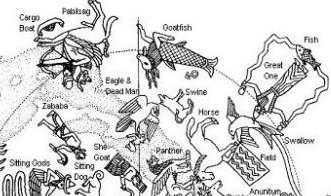
And
therefore Shahin (→ Shah) would have
returned to visibility in day 260 (SEPTEMBER
17), when the Full Moon reached MARCH 17
(76 = 260 - 184) - an event which surely would
have been good (maitaki)
and have cheered all 'hearts'. The Milky Way
River was a path of reincarnation.
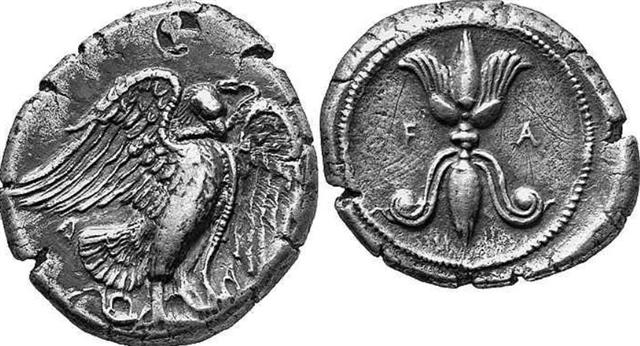
...
In the inscriptions of Dendera, published by
Dümichen, the goddess Hathor is called
'lady of every joy'. For once, Dümichen adds:
Literally ... 'the lady of every heart circuit'.
This is not to say that the Egyptians had
discovered the circulation of the blood. But the
determinative sign for 'heart' often figures as
the plumb bob at the end of a plumb line coming
from a well-known astronomical or surveying
device, the merkhet. Evidently, 'heart'
is something very specific, as it were the
'center of gravity' ... See Aeg.Wb. 2, pp. 55f.
for sign of the heart (ib) as expressing
generally 'the middle, the center'.
And
this may lead in quite another direction. The
Arabs preserved a name for Canopus - besides
calling the star Kalb at-tai-man ('heart
of the south') ... Suhail el-wezn,
'Canopus Ponderosus', the heavy-weighing
Canopus, a name promptly declared meaningless by
the experts, but which could well have belonged
to an archaic system in which Canopus was the
weight at the end of the plumb line, as befitted
its important position as a heavy star at the
South Pole of the 'waters below'. Here is a
chain of inferences which might or might not be
valid, but it is allowable to test it, and no
inference at all would come from the 'lady of
every joy'. The line seems to state that
Hathor (= Hat Hor, 'House of
Horus') 'rules' the revolution of a specific
celestial body - whether or not Canopus is
alluded to - or, if we can trust the translation
'every', the revolution of all celestial bodies.
As concerns the identity of the ruling lady, the
greater possibility speaks for Sirius, but Venus
cannot be excluded; in Mexico, too, Venus is
called 'heart of the earth'. The reader is
invited to imagine for himself what many
thousands of such pseudo-primitive or poetic
interpretations must lead to: a disfigured
interpretation of Egyptian intellectual life
...
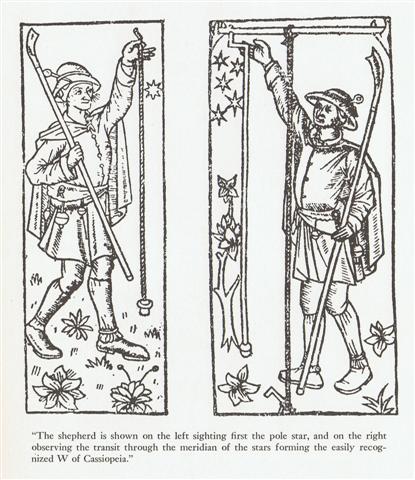
And when Azmidiske (ξ)
- the little shield around 25º S marking Puppis
-

|
pupa
... chrysalis ... modL. use by
Linnæus (1758) of L. pūpa,
doll; cfr PUPPET.
puppet
... †doll; (human) figure jointed
and moving on strings or wires ...
lathe-head ...
chrysalis
... form taken by an insect in the
stage between larva and imago ... L.
chrysal(l)is ... Gr.
khrūsallis gold-coloured sheath
of butterflies, f. khrūsós
gold ...
imago
... (entom.) final stage of an
insect ... Mod. use (by Linnæus,
1767) of L. imāgō IMAGE.
image
... artificial representation of an
object, likeness, statue; (optical)
counterpart ... mental
representation ... rel. to IMITATE
... |
was at the Full Moon
(at the time of rongorongo)
this was half a year later than the day when in
January 16 the Falcon (Al-shain, β) returned to visibility after
its close encounter with the Sun. 260 (SEPTEMBER
17) = 365 + 16 - 11 * 11.
|
Egyptian djed |
 |
Phoenician
sāmekh |
 |
Greek
xi |
Ξ (ξ) |
|
... In rongorongo times the last
Greek lettered star
in Orion (ξ)
rose with the Sun in June 21.
The letter seems to have
originated from the Phoenician
letter samekh (tent peg,
supporting prop), which in turn
may have been derived from the
ancient Egytian djed
column ...
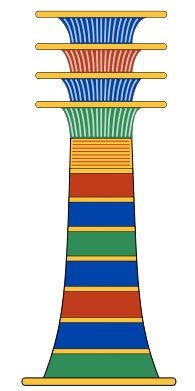 |
|
Egyptian house |
 |
Phoenician beth |
 |
Greek beta |
Β (β) |
|
... Like the
names of most other Greek
letters, the name of beta
was adopted from the
acrophonic name of the
corresponding letter in
Phoenician, which was the
common Semitic word *bayt
('house').
In the system
of Greek numerals beta
had a value of 2.
... 'The traditions show
that the residences of the
king were fairly flexible.
The building of new houses
was obviously the result of
(male) births in the royal
family. In each case, the
house that was built last is
left to the newborn son and
his mother, together with a
specific servant, while the
king has a new and separate
residence constructed for
himself
...
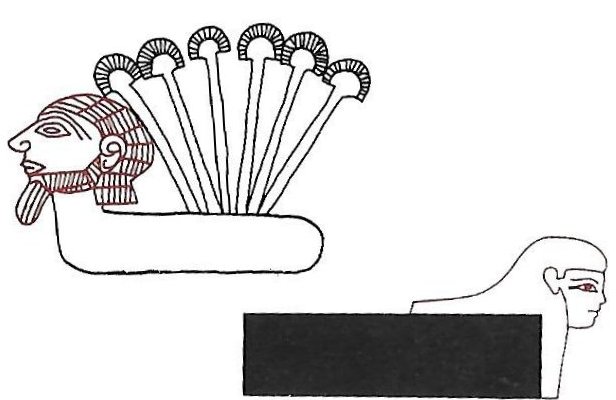 |
|
Manacle |
ziqq |
Phoenician zayin |
 |
Greek zeta |
Ζ (ζ) |
|
... Zeta (uppercase
Ζ,
lowercase
ζ;
Greek:
ζήτα
... is the sixth letter of
the Greek alphabet. In the
system of Greek numerals, it
has a value of 7. It was
derived from the Phoenician
letter Zayin. Letters
that arose from zeta include
the Roman Z and Cyrillic
З
...
Zayin
(also spelled Zain or
Zayn or simply Zay)
is the seventh letter of
many Semitic abjads ... It
represents the sound
[z].
The Phoenician letter
appears to be named after a
sword or other weapon. (In
Biblical Hebrew, 'Zayin'
means sword, and the verb 'Lezayen'
means to arm. In modern
Hebrew, 'zayin' means
penis and 'lezayen'
is a vulgar term which
generally means to perform
sexual intercourse and is
used in a similar fashion to
the English word fuck,
although the older meaning
survives in 'maavak
mezuyan' (armed
struggle) and 'beton
mezuyan' (armed,
i.e., reinforced concrete).
The Proto-Sinaitic glyph
according to Brian Colless
may have been called ziqq,
based on a hieroglyph
depicting a 'manacle'.

 |
|
no glyph |
koia |
ki te hoea |
ki te henua |
te rima te hau tea |
haga i te mea ke |
ki te henua - tagata honui |
 |
 |
 |
 |
 |
 |
|
Ca1-1 |
Ca1-2 |
Ca1-3 (121 - 118) |
Ca1-4 |
Ca1-5 |
Ca1-6 |
|
Sept 20 |
21 (264) |
Equinox |
23 |
24 (☼183) |
25 (*5 + *183) |
26 (☼185) |
|
"Aug 10 (222) |
11 |
12 (265 - 41) |
13 (15 * 15) |
14 |
(227 = 268 - 41) |
16 (*148) |
|
CLOSE TO
THE FULL MOON: |
|
Al Fargh al Thāni-25 (Rear Spout)
0h (365.25)
CAPH (Hand) =
β
Cassiopeiae,
SIRRAH (Navel of the Horse) =
α
Andromedae
(0.5),
ε
Phoenicis,
γ³
Oct.
(0.8) |
Uttara Bhādrapadā-27 (2nd of the Blessed
Feet) /
Wall-14 (Porcupine)
ο Oct. (1.3),
ALGENIB PEGASI = γ Pegasi
(1.8) |
χ Pegasi (2.1), θ Andromedae (2.7) |
σ Andromedae (3.0), ι Ceti (3.3), ζ Tucanae
(3.5), ρ Andromedae, π Tucanae (3.7) |
no star listed (4) |
ANKAA = α Phoenicis,
κ Phoenicis (5.0)
ALPHARD (α Hydrae)
|
λ Phoenicis (6.3), β Tucanae (6.4) |
|
CLOSE TO THE SUN: |
|
ALCHITA = α Corvi,
MA WEI (Tail of the Horse) = δ Centauri
(183.1),
MINKAR = ε Corvi
(183.7), ρ Centauri (183.9) |
PÁLIDA (Pale) =
δ
Crucis
(184.6),
MEGREZ (Root of the Tail) =
δ
Ursae Majoris
(184.9) |
Hasta-13 (Hand) /
Chariot-28 (Worm)
GIENAH (Wing) =
γ
Corvi
(185.1),
ε
Muscae (185.2),
ζ
Crucis (185.4),
ZANIAH (Corner) = η
Virginis
(185.9)
*144.0 = *185.4 - *41.4 |
CHANG SHA (Long Sand-bank) =
ζ
Corvi
(186.3) |
INTROMETIDA (Inserted) =
ε
Crucis
(187.4),
ACRUX =
α
Crucis
(187.5)
*146.0 = *187.4 - *41.4 |
γ
Com. Berenicis (188.0),
σ
Centauri (188.1),
ALGORAB =
δ
Corvi
(188.5),
GACRUX =
γ
Crucis
(188.7) |
γ
Muscae (189.0),
AVIS SATYRA (Bird of the
Satyrs) =
η
Corvi
(189.3),
ASTERION (Starry) =
β
Canum Ven.
(189.5),
KRAZ = β Corvi,
κ Draconis (189.7) |

... Raven gazed up and down the beach. It
was pretty, but lifeless. There was no one
about to upset, or play tricks upon. Raven
sighed. He crossed his wings behind him and
strutted up and down the sand, his shiny
head cocked, his sharp eyes and ears alert
for any unusual sight or sound. The
mountains and the sea, the sky now ablaze
with the sun by day and the moon and stars
he had placed there, it was all pretty, but
lifeless. Finally Raven cried out to the
empty sky with a loud exasperated cry. And
before the echoes of his cry faded from the
shore, he heard a muffled squeak. He looked
up and down the beach for its source and saw
nothing. He strutted back and and forth,
once, twice, three times and still saw
nothing. Then he spied a flash of white in
the sand. There, half buried in the sand was
a giant clamshell. As his shadow fell upon
it, he heard another muffled squeak. Peering
down into the opening between the halves of
the shell, he saw it was full of tiny
creatures, cowering in fear at his shadow
... |
|



























